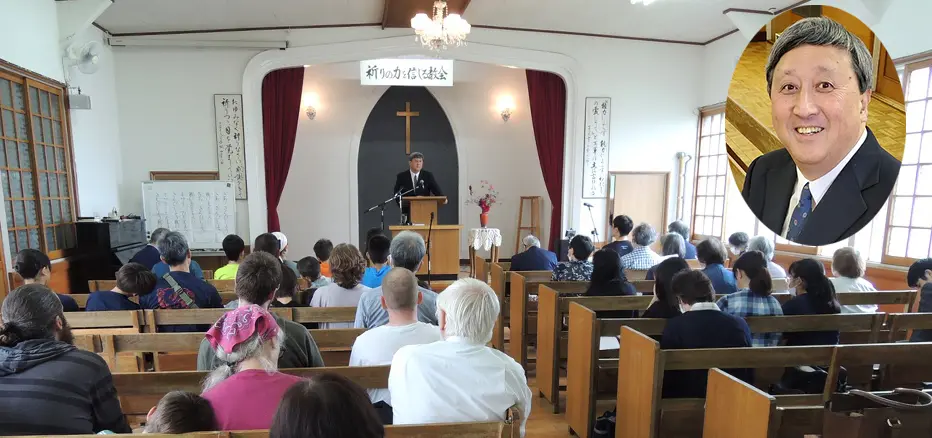Making church uncomfortable is our strategy: a pastor’s challenge in rural Aomori Prefecture

“Are you sure you want to come?” was the question Pastor Hattori was asked multiple times before he took his pastoral role at Aomori Evangelical Church. The church is situated in an area that has heavy snow during the winter. It’s not an easy place to handle for someone with little experience with snow.
The population of Aomori City is in decline, and so is the number of churches. Young people and children are scarce. It is also known for itako1 and as the place where Jesus’s grave lies.2 In this place where spiritual warfare is evident, the church has still managed to survive. How?
“When missionaries come, they often teach English classes to keep people connected,” shared Pastor Hattori. “But this can lead to people leaving when the missionary leaves. At this church, the baton was passed on to a Japanese pastor early on, and the first pastor gave his sermons in the Tsugaru dialect.”3
Hattori believes that hearing the sermons in their own dialect is what kept people connected to the church.
The church has a 70-year history. Most of the members know each other, making it a comfortable atmosphere for the believers. But Hattori had doubts. When you get comfortable with where you are, you become reluctant to look outwards. Is there a heart for ministry when the church is unwelcoming to outsiders?
“First, I built a website to let people know about our church. Twice a month we had services aimed at non-believers. We made the sermons available online, too.”
Some church members felt uneasy about this. “It didn’t surprise me,” says Hattori. “They were comfortable with how things were. But I wasn’t doing anything that wasn’t in the Bible. Nowhere in the Bible does it say we should aim for a homey church. Although fellowship and a homey atmosphere are good, if a ‘homey church’ makes outsiders feel left out, that would be a shame.”
Hattori dedicated his first two years in Aomori to bringing about change in the believers’ mindsets. He continued preaching on the matter with perseverance. Gradually, some began to understand his intention. Now, the leaders and believers work together to bring about change.
Recently, for the first time in a while, four junior high and high schoolers got baptized at the church. “A place that is comfortable for young people is not always comfortable for the elderly,” said Hattori. “Some people felt uneasy with the youth, while others were welcoming. It wasn’t an easy process, but I believe that the Word gradually changed people’s hearts.”
Home Bible studies resumed over time. Bible studies in other facilities are due to start, too. The church lunch that had been cancelled due to COVID also resumed. We are reminded of the significance of eating together, just like Jesus did.
One thing that Hattori is finding problematic is the “weakening of sermons.” He says, “In general, sermons are getting shorter. My sermons tend to be 50 minutes on average. At first, I received complaints. But when I include the application of the message into my sermons, this is how long it ends up being.”
“One of my former mentors and a prominent theologian, Alistair McGrath, told me that I should make sermons that become a point of contact to the Christian world for those who are not believers. One day, I would like to be known as a pioneer of restoration so that when people look back, they will see what’s happening as a turning point. That is why I urge people to consider the generations to come, and to fulfill our responsibilities.”
There is one thing that Hattori wants to stress. “I feel like rural areas have been forgotten and left out nationally. I would like to see more people coming to rural areas. This is the earnest cry of a pastor.”
1. A medium who speaks to the dead, traditionally a blind woman trained from a young age.
2. A gravesite related to an apocryphal story that Jesus’s younger brother took his place on the cross while Jesus returned to Japan and lived in a village (now Shingō) until the age of 106.
3. A dialect in western Aomori.
From Christian Shimbun, January 28, 2024
Translated by Grace Koshino
